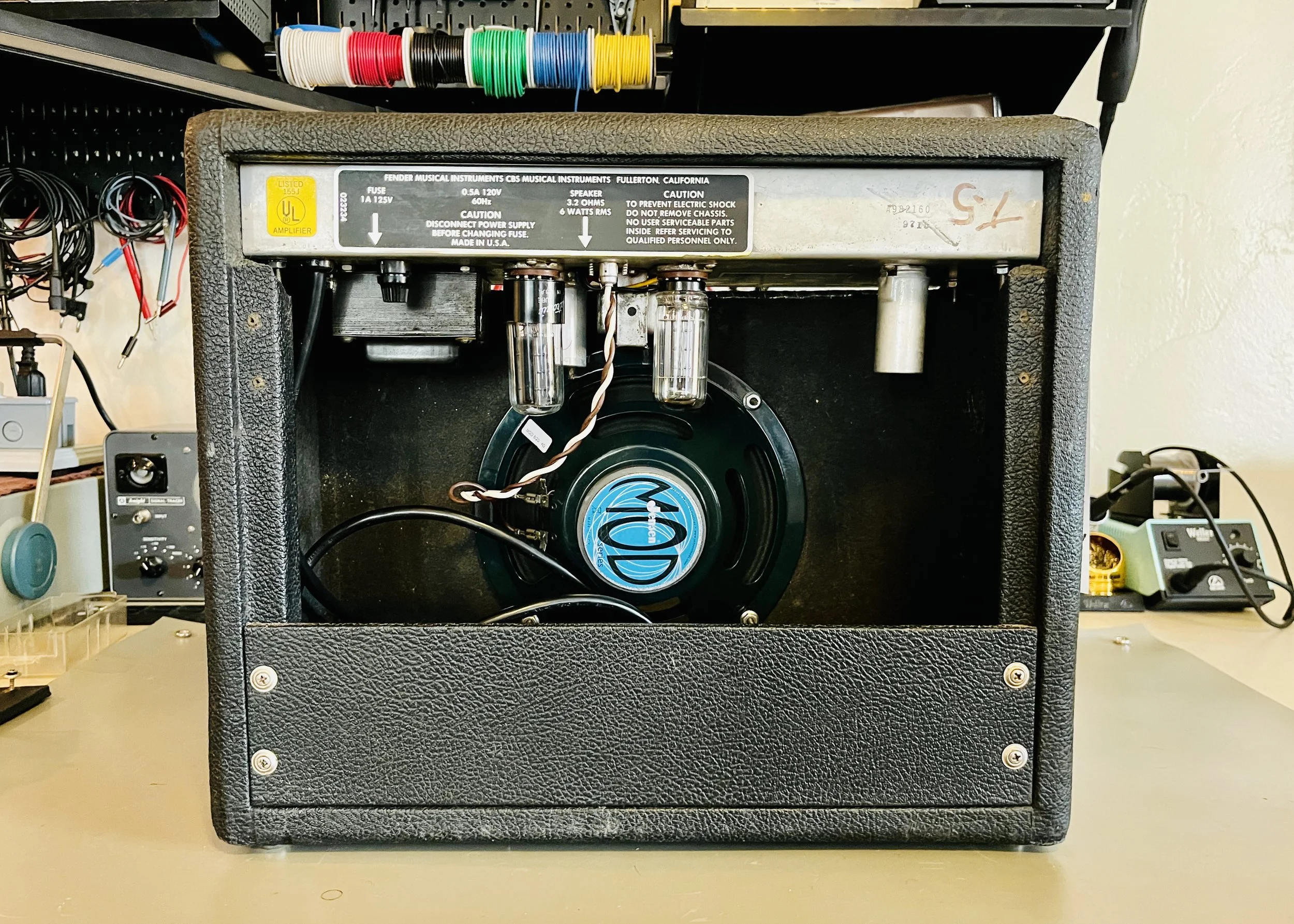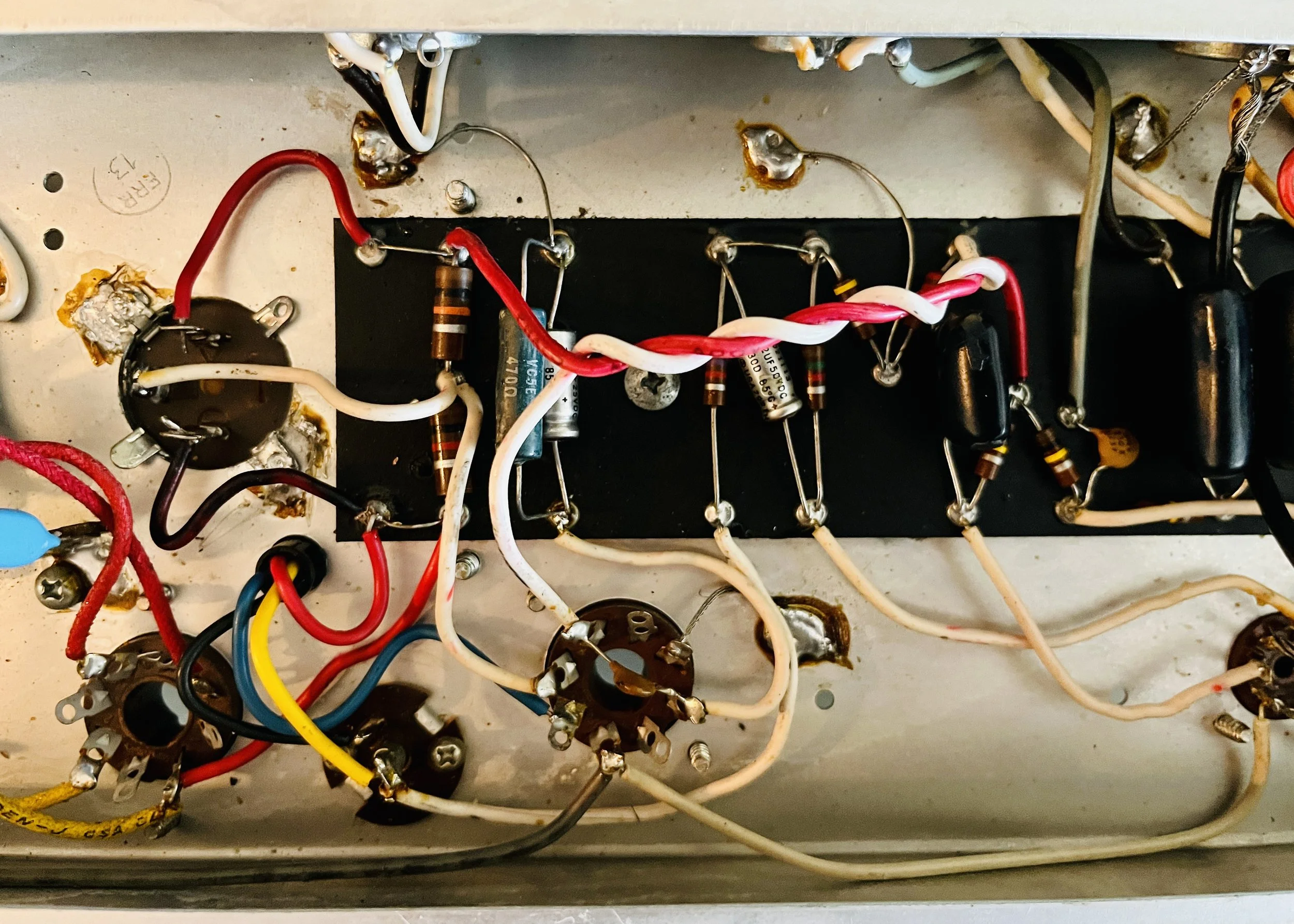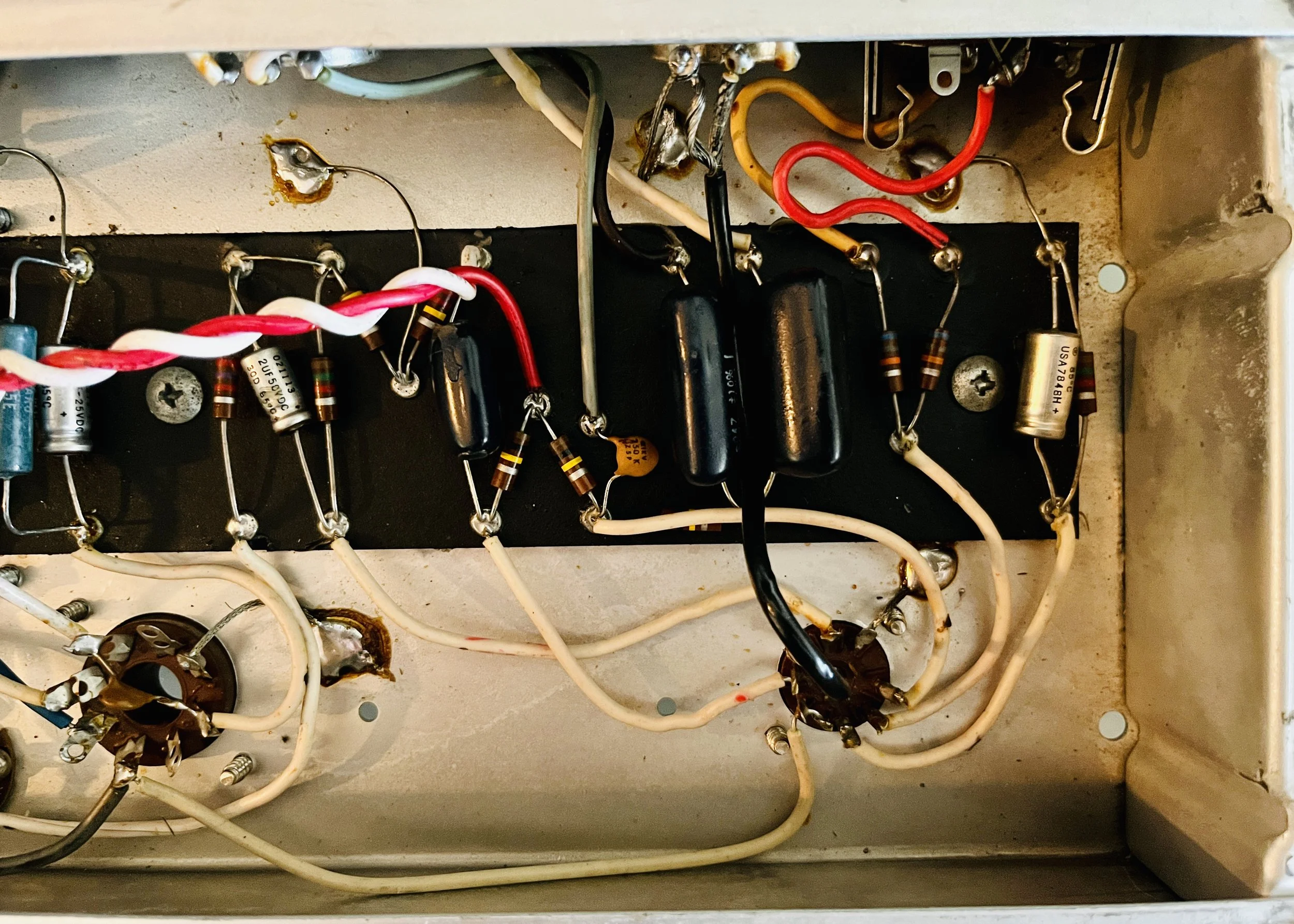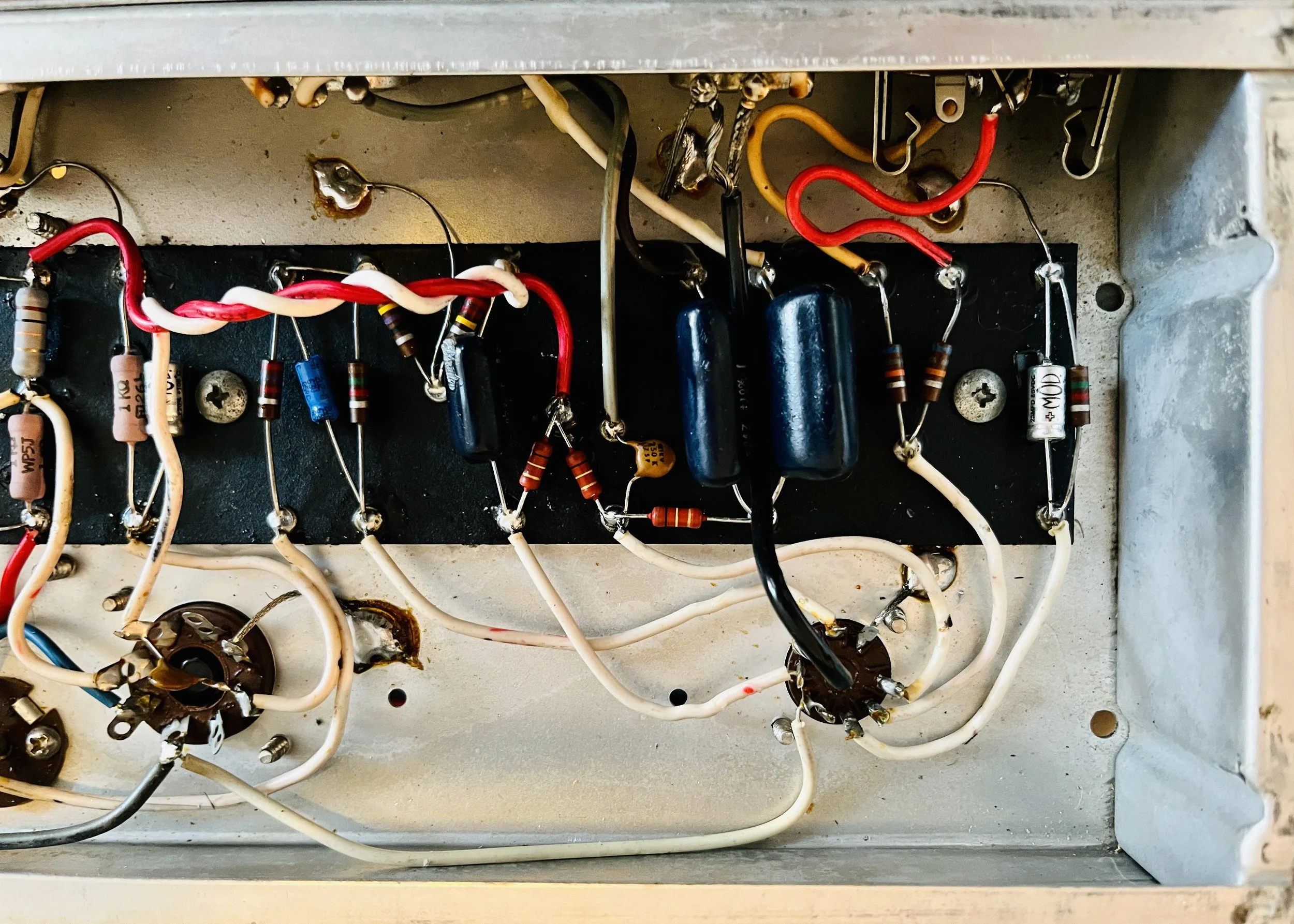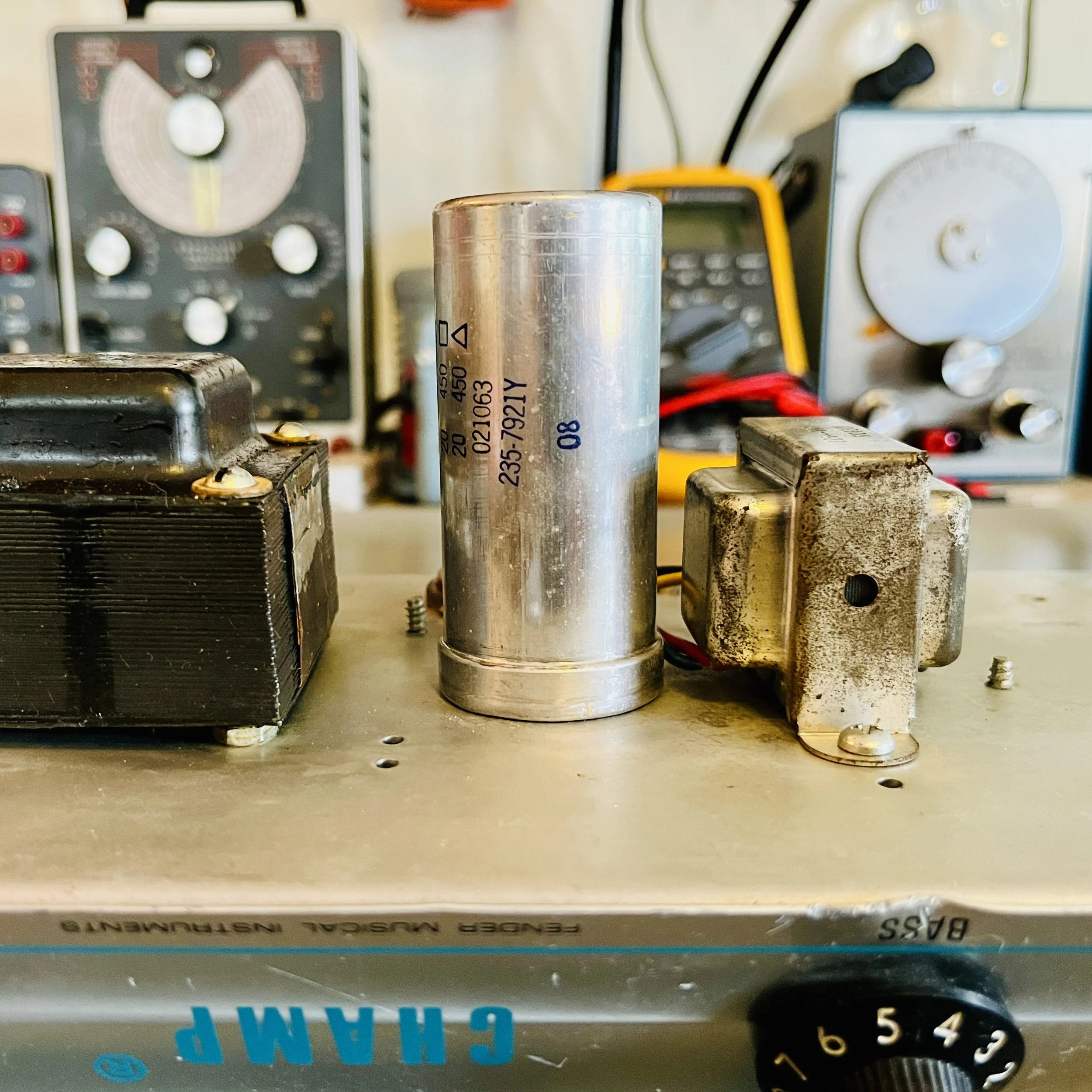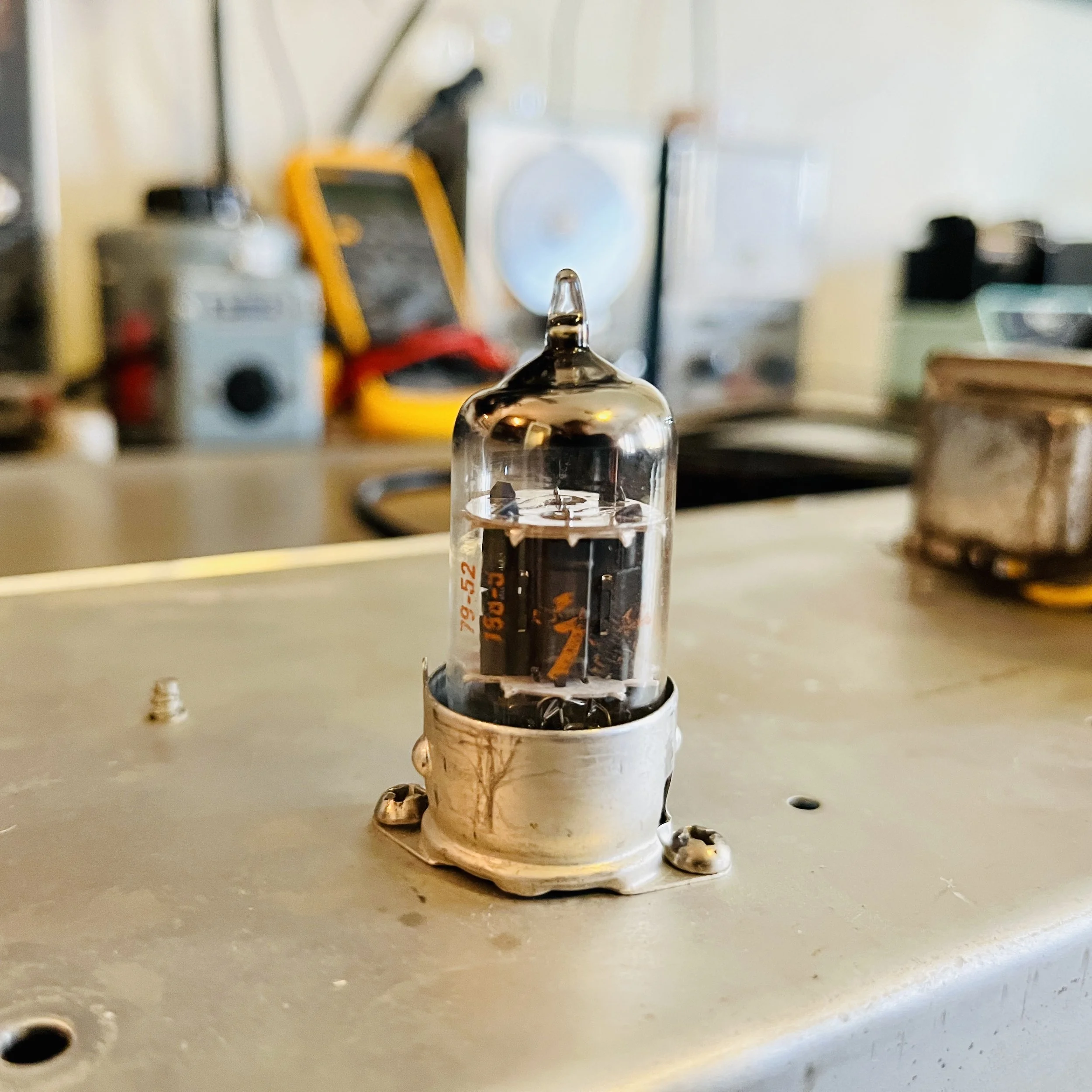1979 Fender Champ
Compared to most other amp models that Fender produced, they kept the Silver-Panel Champ and Vibro Champ circuits almost unchanged from the Black-Panel era. All capacitor and resistor values are the same between the two eras and the only real differences are the cab construction/materials, brand of film caps, plus the change to PVC insulated wires & a slightly messier layout. So if you want a 1960’s Fender amp at a 1970’s price then these are a great value. In my opinion they sound almost identical - they have an iconic sound with a character-laden overdrive crunch at max volume. Notable users include: Kurt Cobain, Robert Fripp, Robbie Robertson, and Molly Rankin.
This one came in almost completely original condition with the exception of the speaker having been changed out to a Jensen MOD 8” 20 Watt type unit. Which is a good choice for this amp - honestly it’s an improvement over what were installed in these originally. It had a leaking filter cap can, bad electrolytics, and needed new power resistors + a 5Y3GT rectifier tube. A standard restoration was in order.
The amp was completely restored. The electrolytic cap can was replaced with a new USA made CE brand exact replica (20uf x 4 @ 475v) for the filter section. The bypass caps were replaced with MOD/Vishay brand electrolytics with upgraded voltage and temperature ratings. New 2 Watt Metal Oxide/5 Watt cement power dropping resistors were installed for better reliability and lower noise floor. All plate resistors were replaced with 2 Watt Reduced Mass Metal Film type units for preventative maintenance and reliability. A new 5 Watt 470 ohm Wire-Wound cathode bias resistor was installed for better reliability and for stability of the 6V6GT bias. A new 3 prong AC cord was installed to replace the old AC cord and the death cap was removed.
One of the original tubes (the 5Y3GT rectifier) did not test good and was replaced. The final lineup was: V1 = GE 12AX7A, V2 = Sylvania 6V6GT, V3 = NOS GE 5Y3GT. These tubes were picked for best tone and reliability. The 6V6GT’s Cathode Bias was set to 93% Class A Plate Dissipation with a B+ of 430VDC. The tube sockets were all re-tensioned to stop the tubes from jiggling or falling out while they hang upside down - they also were cleaned with a De-Oxit treatment to prevent noise from corrosion. The pots were sprayed out and the amp was cleaned inside and out.


